Revision Notes: Rise of Dictatorships | History for Grade 9 PDF Download
| Table of contents |

|
| Rise of Dictatorship |

|
| Fascism |

|
| Reasons for the Rise of Fascism in Italy |

|
| Fascism in Italy |

|
| Nazi Dictatorship in Germany |

|
Rise of Dictatorship
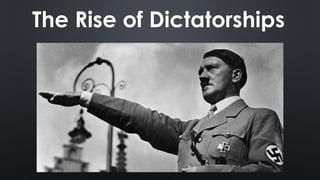
After World War I, many countries embraced democracy. However, over time, dictatorial regimes emerged in Russia, Germany, Italy, and Spain. These nations sought to strengthen their military power and rejected cooperation with the League of Nations.
Fascism
Between the two world wars, Fascism rose in Italy, and Nazism emerged in Germany. The term "Fascism" comes from "fascio," meaning union or league. In Fascism, all power is concentrated in one individual, and everyone else must follow his orders. Originating in Italy, Fascism is characterized by its anti-nationalist, anti-communist, and anti-democratic principles.
Reasons for the Rise of Fascism in Italy
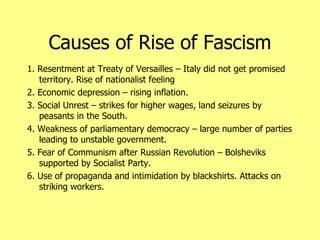
- Discontent After World War I: Italy joined the Allies in World War I with the hope of gaining territories from Germany and Turkey. However, post-war, Italy only received southern Tyrol, Trentino, and some coastal regions of Dalmatia, leading to widespread discontent.
- Economic Hardships: After the war, Italy faced severe economic challenges. Trade, commerce, and industries were devastated, resulting in massive unemployment and a shortage of food grains.
- Political Instability: With the establishment of democracy in 1919, no single party could secure a majority in Italy. This led to political instability, with six coalition governments formed between 1919 and 1922. The lack of consensus on economic policies hindered the government’s ability to address rising unemployment, strikes, and riots.
- Class Conflicts: During the interwar period, class conflicts intensified. The common people resented the concentration of resources in the hands of the aristocracy and the wealthy, fueling social tensions.
- Reaction to Communism: Inspired by the Russian Revolution, communists in Italy began promoting revolutionary ideas, leading to peasants seizing land and workers going on strikes. Landlords and industrialists, perceiving communism as a threat, started supporting Fascism as a countermeasure.
- Weakness of the League of Nations: The League of Nations proved to be an ineffective organization, unable to curb the rising influence of Fascism in Italy and Nazism in Germany.
- Mussolini’s Charisma: Benito Mussolini, with his charismatic personality, garnered public support by praising Italy’s past glories. He was affectionately called “Duce,” meaning leader, further solidifying his position.
- The Symbol of the Fasces: The Fascists adopted the ancient Roman symbol of power, the Fasces—a bundle of sticks bound to an axe—to represent their authority and strength.
Objectives of Fascism
Main Objectives of Fascism:
- Opposition to Democracy: Fascists believed that democracy exacerbates the divide between the rich and the poor.
- One-Party Rule: They advocated for a single party and a single leader, asserting that progress could only be made under the guidance of one leader.
- Control Over Society: Fascists aimed to control all sections of society, including capitalists, industrialists, workers, artisans, and peasants.
- Emphasis on Nationalism: Fascism prioritized nationalism over individual institutions.
- Aggressive Nationalist Policies: Fascists supported aggressive nationalist policies.
Fascism in Italy
- Background: Italy during the First World War was under the rule of King Victor Emmanuel, who was a weak leader. The country was lagging behind in the Industrial Revolution and the competition for colonial possessions.
- Benito Mussolini's Shift: Initially a socialist, Mussolini changed his stance when he realized that he could not secure funding from industrialists as a socialist. He became anti-socialist and started forming groups known as "Fascios" that engaged in violent actions against socialists and communists.
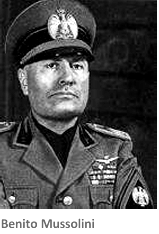
- Formation of the Fascist Party: These groups eventually evolved into the Fascist Party. In October 1922, a conference of the Fascist Party in Naples led to Mussolini demanding a greater role for Fascists in the government and calling for new elections, among other demands.
- March on Rome: When the government did not accept his demands, Mussolini and his followers marched to Rome on 28 October 1922. In response, Emperor Victor Emmanuel III invited Mussolini to form a new government.
- Consolidation of Power: After assuming power, Mussolini appointed Fascists as prefects in various provinces and organized the National Army. His regime was marked by a reign of terror, and he quickly established himself as the absolute ruler of Italy.
- Support from Ruling Classes: Mussolini's rise to power was facilitated by the ruling classes of Italy, who viewed democracy and socialism as threats to their authority.
- Expansionist Beliefs: Mussolini believed in the idea that "Italy must expand or perish." He pursued territorial expansion, including the conquest of Abyssinia in 1936. When the League of Nations protested, Italy withdrew from the League.
- End of Fascism in Italy: Fascism in Italy came to an end after World War II. Mussolini was deposed by his own party council in 1943 and executed in 1945, marking the conclusion of Fascist rule in Italy.
Impact of Fascism
Positive impact of Fascist Rule:
- Economic Reforms: Mussolini implemented various administrative and economic reforms to strengthen Italy. He focused on stopping currency devaluation, expanding agriculture, and establishing hydroelectric power plants to address coal shortages.
- Employment Initiatives: To reduce unemployment, factories and mills were nationalized, and syndicates were created to improve relations between capitalists and workers. Mussolini also enhanced the transport system in Italy.
- Education and Literacy: New schools, colleges, and libraries were established to eradicate illiteracy in the country.
- Military Strengthening: Measures were taken to bolster Italy's military, including making military training compulsory and enhancing naval capabilities.
- Pact with the Pope: Mussolini signed a pact with the Pope, where the Pope recognized Mussolini's government, and in return, Roman Catholicism was declared the state religion.
Negative impact of Fascist Rule:
- Suppression of Political Freedoms: All political freedoms were curtailed under Mussolini's rule. Italy became a dictatorial state with all civil and military powers concentrated in Mussolini's hands.
- Elimination of Political Opposition: All political parties except the Fascist Party were banned. Mussolini crushed his opponents and established a totalitarian regime.
- Censorship and Control: The press was censored, and freedom of speech was denied to the people. This ensured that any dissent against the regime was silenced.
Nazi Dictatorship in Germany
After Germany's defeat in World War I, King Kaiser Wilhelm was forced to abdicate, leading to the establishment of a democratic republic. Free elections were held, a new constitution was adopted, and the Weimar Republic was formed. However, no single party could secure a majority, resulting in political instability. Between 1919 and 1933, Germany saw 21 ministries under 12 chancellors, facing economic decline, riots, and power struggles.
Rise and Fall of Hitler
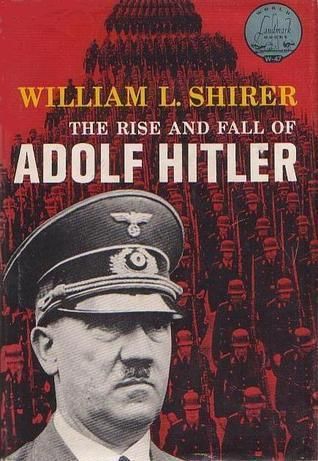
- Adolf Hitler, born in Austria, fought for Germany in World War I. In 1919, he joined a small political group that later became the National Socialist Party, or the Nazi Party, and he became its leader.
- Hitler initially tried to seize power by marching on Berlin but was arrested and imprisoned. During his time in prison, he wrote Mein Kampf , outlining his ideas and plans.
- After his release, Hitler ran for election in July 1932 but did not win a majority in the Reichstag, the German Parliament. When the government led by Von Papen failed, President Hindenburg appointed Hitler to lead the government.
- After President Hindenburg died, Hitler consolidated his power, taking the title of "Fuhrer." He dismantled the Constitution, establishing a dictatorship in Germany.
- Hitler led Germany during World War II, but he was eventually defeated by the Allied powers. In 1945, facing defeat, he committed suicide.
Factors Contributing to the Rise of Nazism
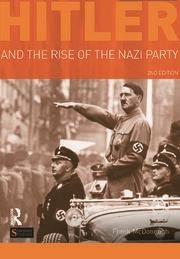
Humiliating Treaty of Versailles
- Germany's defeat in World War I led to the signing of the harsh Treaty of Versailles.
- The treaty imposed severe terms on Germany, including the loss of overseas colonies, a massive war indemnity of 33 billion dollars, demilitarization of the Rhine area, and the loss of mineral territories.
- Hitler's defiance of the treaty resonated with Germans, as he promised to restore Germany's power and prestige.
Growing Fear of Communism
- The rise of communism in Germany, with the communists gaining seats in the Reichstag, created fear among the populace.
- Hitler exploited this fear by positioning the Nazi Party as the only force capable of combating the spread of communism.
Economic Crisis
- Post-war Germany faced severe economic challenges, including declining industrial and agricultural production.
- Increased tariffs from other countries on German goods and rising unemployment exacerbated the situation.
- Hitler appealed to the public by promising economic restructuring and financial reorganization, aiming to restore Germany's economy.
Rise of Militant Nationalism
- Hitler's vision of restoring Germany's lost glory and making it a dominant power resonated with nationalist sentiments.
- His promise to revive Germany's strength and status garnered increasing support from the populace.
Anti-Semitic Propaganda
- Hitler engaged in anti-Semitic propaganda, claiming that Jews had conspired with the Allies during World War I and were responsible for Germany's defeat.
- This propaganda garnered support for Hitler from many Germans.
Charismatic Personality of Hitler
- Hitler possessed a charismatic personality and was an exceptional speaker. His speeches convinced people that he was the only one capable of uplifting Germany.
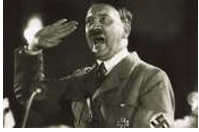
- As a shrewd politician, he promised to resolve the people's economic problems once the Nazis came to power.
- Hitler also introduced a new style of politics, organizing massive rallies and public meetings to showcase the party's strength. Nazi propaganda effectively portrayed him as a savior who could rescue people from their suffering, capturing the German public's imagination.
- His outstanding oratory skills played a significant role in winning public support.
Absence of Strong Opposition
There was no strong opposition party in Germany capable of challenging the Nazis' ideologies and plans.
Without effective resistance, the Nazis gained popularity, and Hitler became extremely well-liked by the people.
Objectives of Nazism
- To promote nationalism.
- To support rule by a strong leader from a single party.
- To reject internationalism, peace, and democracy.
- To use force and brutality.
- To believe that wars are necessary to strengthen the country.
- To uphold the racial superiority of Germans and foster hatred towards Jews.
Effects of Nazism

Formation of a Dictatorial Regime
- Hitler took on dictatorial powers in Germany, consolidating authority and eliminating opposition.
- He transformed Germany from a federal to a unitary state, declaring all political parties illegal except for the Nazi Party and its affiliates.
- A secret police force known as the Gestapo was established to monitor citizens, and freedom of speech was curtailed.
Economic Reforms
- Hitler implemented various reforms to rebuild the nation’s economy, including:
- Encouraging industrial and agricultural production and setting up factories to provide employment.
- Establishing a food cooperation to regulate food production, pricing, and distribution.
- Encouraging capitalists to increase production while banning strikes.
- Increasing the production of heavy armaments, airplanes, and naval ships.
- Dissolving trade unions and requiring all workers to operate under Hitler’s leadership.
Militarism and Compulsory Military Training
- The German army, air force, and navy were expanded under Hitler's regime.
- Military training became mandatory for all citizens.
Renouncement of Peace Treaties
A key goal of Hitler's foreign policy was to reject the Treaty of Versailles, which he deemed unfair. He openly criticized the treaty, refused to pay war reparations, and violated its terms by strengthening Germany's military.
Acquisition of Territories
- Hitler aimed to acquire overseas colonies to accommodate Germany's growing population and secure raw materials for industries.
- He focused on expanding into Southern and Eastern Europe, rich in minerals and agricultural products.
- In 1934, Hitler signed a non-aggression treaty with Poland to protect its eastern borders and recaptured Saar and Rhineland from France.
- He also signed a non-aggression pact with Russia.
Racial Supremacy
- Hitler promoted the idea of Aryan racial superiority, believing that only Nordic German Aryans were fit to lead society while Jews were considered the lowest and fiercest enemies.
- The Nazis aimed to eliminate Jews, physically disabled Germans, gypsies, and black Germans.
- Jews faced the harshest treatment, forced into ghettos, and later concentration camps and gas chambers.
- Poles were displaced from their homes and properties for German settlers, with many sent to concentration camps and murdered in large numbers.
Similarities between Fascism and Nazism

- Both ideologies supported the idea of a totalitarian state.
- They aimed to oppose democracy and communism.
- Both believed in the need for one party and one leader.
- They advocated for aggressive nationalism and imperialism.
- Both ideologies glorified war.
- Fascism in Italy and Nazism in Germany emerged due to the poor economic conditions in these countries at the time.
- Both nations were dissatisfied with the Treaty of Versailles and feared the spread of communism.
The failure of the League of Nations and political instability also contributed to the rise of dictatorial governments in both countries.
|
24 docs|7 tests
|
FAQs on Revision Notes: Rise of Dictatorships - History for Grade 9
| 1. What were the main reasons for the rise of fascism in Italy? |  |
| 2. How did Mussolini establish fascism as the dominant political force in Italy? |  |
| 3. What were the key characteristics of fascism in Italy? |  |
| 4. How did the Nazi dictatorship in Germany compare to fascism in Italy? |  |
| 5. What impact did the rise of fascism and Nazism have on Europe and the world? |  |















